Categories
- animatronics (12)
- apple (11)
- arduino (179)
- art (41)
- articles (121)
- artificial intelligence (11)
- automation (421)
- avr (205)
- bitcoin (3)
- breadboard (9)
- cameras (57)
- cars (26)
- cell phones (28)
- clothing mods (21)
- console mods (26)
- dangerous (94)
- desktop mods (24)
- embedded (5)
- flying things (54)
- fpga (22)
- gaming creations (108)
- interface (225)
- internet (17)
- laptop mods (6)
- lasers (22)
- linux (7)
- magnetic (3)
- medical (12)
- microcontrollers (51)
- misc projects (152)
- msp (12)
- music (124)
- pic (90)
- projects (23)
- pyroedu (76)
- raspberry pi (26)
- robots (312)
- security (36)
- sensors (307)
- software (200)
- solar (19)
- stamp (9)
- tools (149)
- tutorials (98)
- Uncategorized (45)
- usb (44)
- wireless (256)
Sponsors

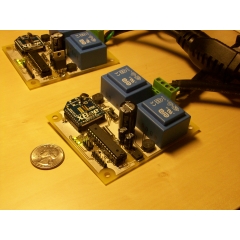
Posted January 16, 2015 by Chris
"The Wireless Power Meter is a simplistic ATmega88p and ZigBee/XBee based true V-I power meter. AC voltage measurement is made from the rectified signal of a step-down transformer, and current measurement is made with the pass-through Allegro ACS712 Hall-Effect sensor."
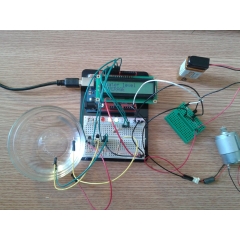
Posted January 6, 2015 by Chris
"Here is a tested Arduino project that uses 3 sensor probes as water level indicator with 3 leds and one LCD display + a simple controller that turns on a motor when the water has reached the desired level. You can use only the leds if you want, the lcd is optional."
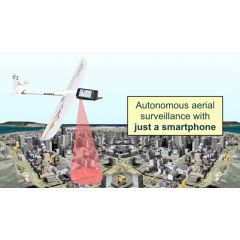
Posted January 3, 2015 by Chris
"In 2009, I was challenged by [govt agency] via GTRI to develop an Unmaned Aerial Vehicle (UAV) which is piloted by a smartphone. In particular, only the sensors on the phone may be used and the flight controller must run on the smartphone. Custom electronics were allowed to interface the phone to the airframe (PHY) but those electronics could sense or control."

Posted December 30, 2014 by Chris
"The new box has two new distance sensors, with differing ranges. One transmits very fine values between about 2 inches and 10 inches, the other larger values between about 4 and 18 inches. Staggering the ranges like this allows for a whole new world of control for the user, such as tilting the hand from front to back, using two hands with complete independence, etc."

Posted December 26, 2014 by Chris
"…I decided to look into capacitive touch buttons. The big issue unfortunately for me was that you usually need a separate chip for capacitive touch sensing. With some tricks, you can however use a normal microcontroller to do the job. Even using only a single pin and resistor."
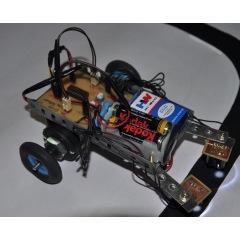
Posted December 21, 2014 by Chris
"Last week I finally got time to do a bit of work. I made my own PCB :). I wish I had learned this back in college. It have would saved me so much time. What PCBs did I make? An improved line follower circuit."
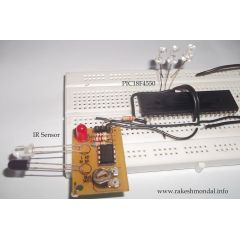
Posted November 22, 2014 by Chris
"In this project, as promised before – we are going to demonstrate a PIC18F4550 microcontroller interface to IR sensor circuit….however you can do some more intelligent operations by adding some more logics to the microcontroller coding. Interfacing infrared Proximity sensors with Microcontroller is quiet easy."

Posted October 20, 2014 by Chris
"The goal of our project was to create both the hardware and software platform that can be used as a adaptable haptic data visualization device…Sure, it’s nice to see [the] data on the computer screen, but what if you could feel it? Bring it to life? With our current haptic visualizer, users can feel any arbitrary surface plot generated in MATLAB as well as animate and manipulate a 3D sandbox used to draw and feel objects."
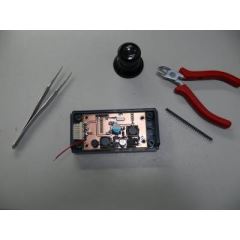
Posted October 7, 2014 by Chris
"In my new Dacia Duster is missing unfortunately an outside temperature indication. A finished thermometer with LCD did not separate from there while the contrast with sunlight usually particularly is. I had still alphanummeric LED display in red there for this project in the best way am suitable. As microcontroller i used a ATTINY 2313. The temperature sensor is a 1-Wire-digital sensor, thus the alignment of the sensor is void."
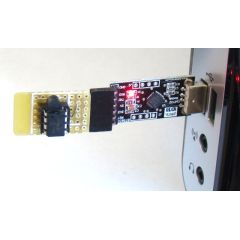
Posted September 3, 2014 by Chris
"This project describes an easy and inexpensive way of adding a digital thermometer and data logging feature to a PC. It involves a PIC microcontroller that gets the surrounding temperature information from the Microchip MCP9701 sensor, and sends it to a PC through an USB-UART interface."






